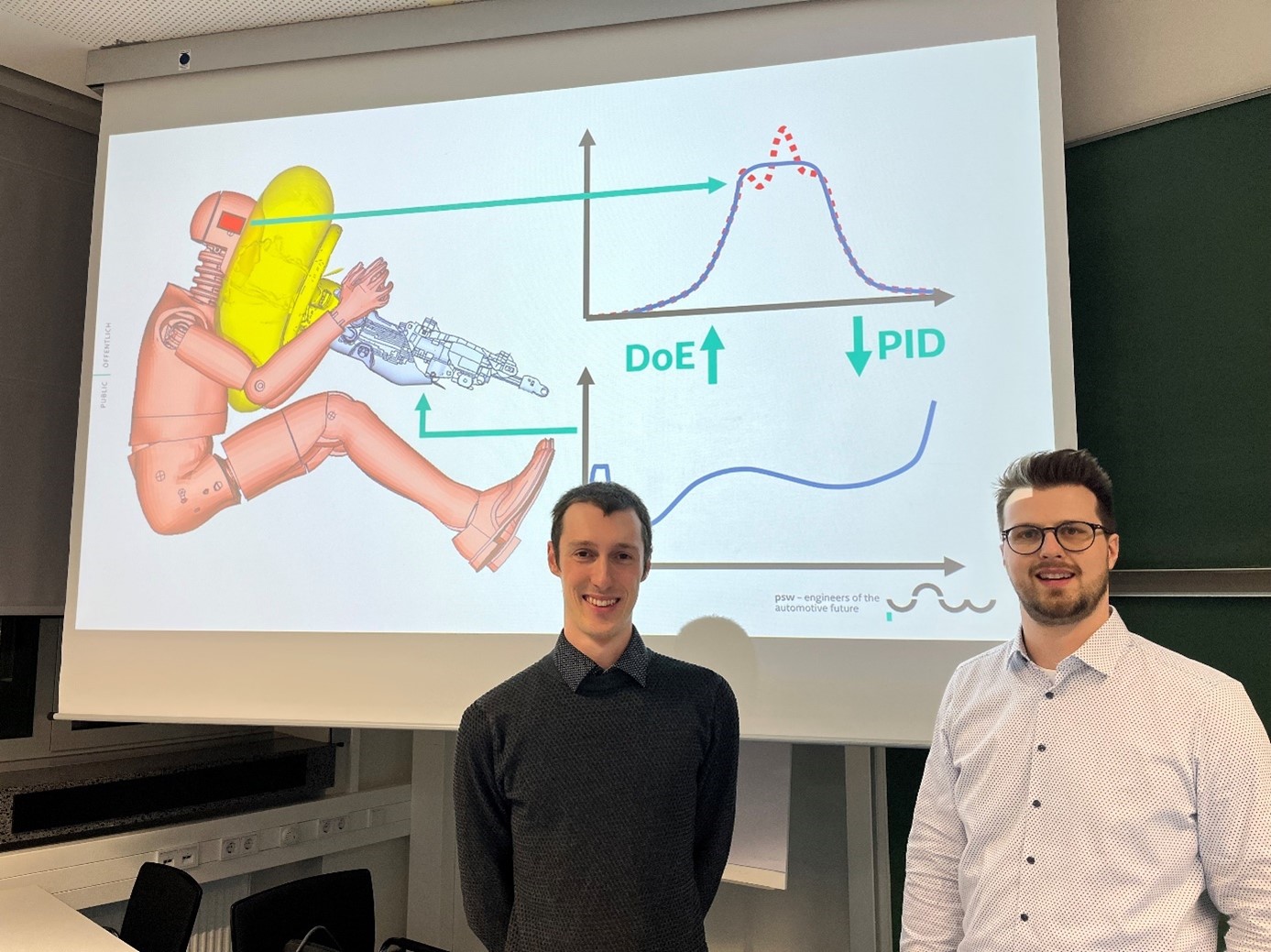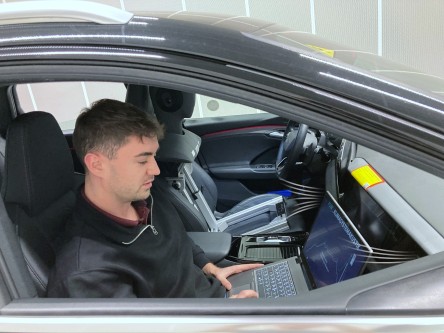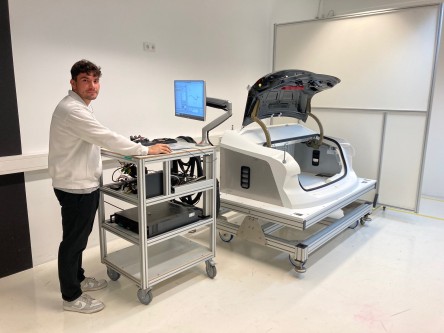The steering column in a vehicle plays a vital role in survival in the event of an accident because a vehicle occupant involved in a front-end crash presses on the steering column via the airbag. “It can be pushed in by exerting force and is therefore a key component of the restraint system,” explained Philipp.
Having worked on this in his master’s thesis, Philipp has now come up with a way of tailoring the force-displacement characteristics of the steering column to the specific conditions in the vehicle. The force-displacement recognition had been developed until now through endless computer-based simulations with passenger restraint systems, numerous development loops in sled tests, and finally indoor crash tests. “My design method will allow automotive engineers to use a PID controller to pinpoint the ideal force-displacement characteristics of the steering column in just a few crash simulations,” said Philipp, happy with the results of his work. The automation is speeding up the development process and the protective effect will be improved for all the passengers.
Integrating the controller into the existing simulation model was a particular challenge for Philipp on the way to the solution. Another time-consuming process was training the controller to the crash simulation standards in terms of the high complexity and dynamics. But the effort paid off because several vehicle development project managers have already announced that they will be using the method advanced by Philipp in the design of their steering columns.


